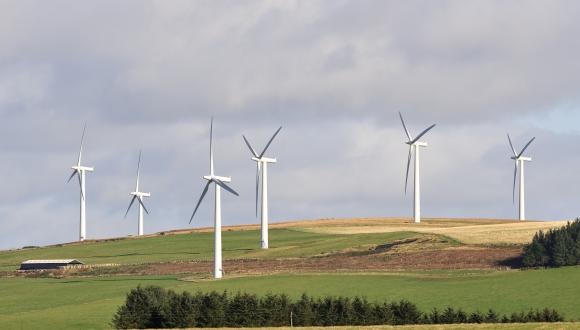Offshore wind energy
Scottish waters offer some of Europe’s windiest sites for harnessing offshore wind energy, but nature and landscape impacts may result.
Wind turbines are now a proven technology, but Scotland is leading the way in developing novel solutions including offshore floating wind technology.
Wind farms and associated transmission infrastructure can have impacts on :
- birds
- marine mammals
- seabed ecology
- fish
- seascapes
- visual amenity
Our approach
We support a planned approach in which offshore wind development is guided towards the locations and technologies that have the least adverse impact on Scotland’s seascapes, species and habitats.
Scotland is recognised across the world for:
- our spectacular and important seabird colonies
- the attractiveness and diversity of our coastline
- the opportunities it offers to see bottlenose dolphins and other marine mammals
Our productive seas are also a vital economic asset.
Commercial offshore wind farms are much larger than onshore wind farms and use bigger turbines. So far, most developments have been in shallow water (10–60m deep). Newer technology such as floating platforms may enable deeper locations to be developed. Currently (2020) Scotland has six operational offshore windfarms or demonstration projects: Robin Rigg (Solway Firth), Beatrice (Moray Firth), Aberdeen Bay, Levenmouth (Firth of Forth), HyWind (Aberdeenshire) and Kincardine (Aberdeenshire). The latter two projects both employ floating wind technology. Four further projects, in the Moray Firth and Firth of Forth, have consent for development, and at least three more, all in the outer Forth and Tay regions, are in planning.
In October 2020, Marine Scotland, who regulate the offshore wind sector in Scottish seas, published a sectoral plan for future commercial offshore windfarm development. This should help guide future schemes to areas of good wind resource but fewer environmental constraints than other locations. NatureScot is strongly supportive of both this strategic approach to offshore wind development in our seas as well as of the final Sectoral Plan itself; see a summary of our response to the consultation, provided in March 2020.
As part of our response, NatureScot landscape advisers undertook a Landscape and Visual Impact Assessment of the current suite of Draft Plan Option (DPO) areas and drafted design guidance. If followed, this should help to minimise or avoid significant landscape or visual impacts arising from future windfarm development in these DPOs, and we encourage developers to consider this when progressing their lease applications. Read our assessment and guidance. Any enquiries related to the assessment or guidance or to our consultation response should be directed to: [email protected]
Guidance
View our general marine renewables guidance including outputs from the marine bird impact assessment workshop held at Battleby in February 2020.
Read our visual representation guidance for onshore and offshore wind farms.
The NatureScot Guidance on Coastal Character Assessment has been developed and is now available.
Predicting bird mortality through collision is an important part of the impact assessment process for offshore wind farms. Collision risk modelling relies on turbine avoidance rates predicted for key species.
Marine Scotland carried out a review of avoidance rates and reported back in 2014. The UK’s four country nature conservation agencies advised on how the offshore wind industry could apply the review’s findings to impact assessment.
Read The Avoidance Rates of Collision Between Birds and Offshore Turbines: BTO Research Report No. 656 and The Joint Response from the Statutory Nature Conservation Bodies to the Marine Scotland Science Avoidance Rate Review
Current projects
You can view all current marine renewable energy project information on the Marine Scotland website.
The information on each project is split to cover the various stages of scoping and pre-application, application and determination, and post-determination.






